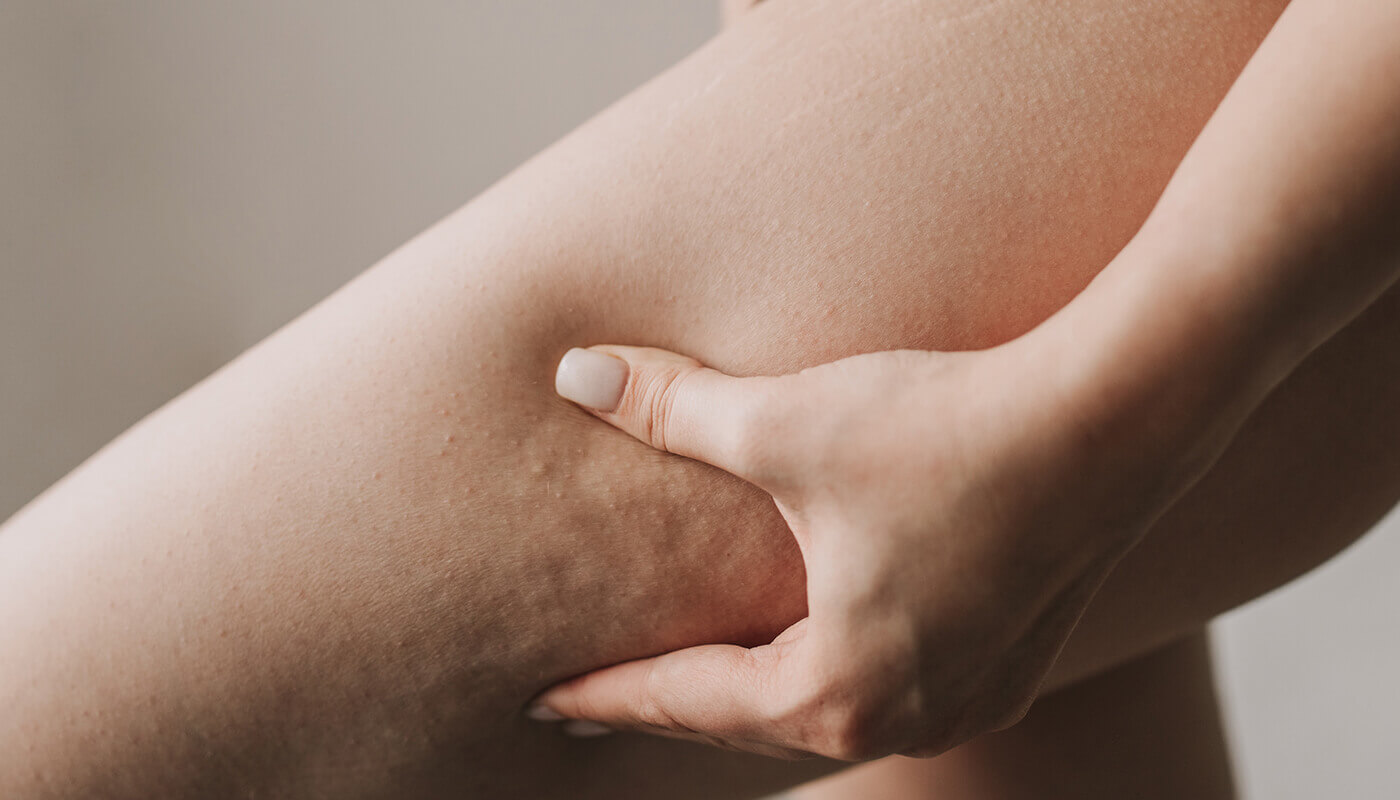Beauty truly does lie in the eyes of the beholder, especially when you consider our attitude towards cellulite.
No one would ever contest that dimples on the legs of a baby are less than darling. Yet, when placed anywhere on the body of an adult, these same lumps of fat can conjure feelings of anxiety, despair and even loathe.
Genetics predispose us to cellulite
Our society has become fat-phobic. We spend countless amounts of time and money trying to banish fat from our bodies. However, even with numerous products, each claiming to be the miracle cure, cellulite remains unconquerable.
If you completely overhaul your diet and lifestyle, there’s a possibility you might be able to keep cellulite at bay. UNLESS your genes dictate otherwise. Genetic variation is partly the reason why many of us – lean and overweight alike – are plagued by cellulite.
Variation in two genes in particular, ACE and HIF1A, have a big influence on the appearance of these fat deposits.
Differences between men and women
Cellulite is more of a problem for women than men, because of the way our bodies are designed.
Male bodies have a single layer of fat all over. Female bodies have three layers of fat in the areas prone to cellulite, such as the stomach and buttocks. These extra layers increase the likelihood of fat cells infiltrating the connective tissue.
Also, there’s a fundamental difference between the connective tissue of men versus women. Men have more collagen in their connective tissue, and their collagen fibres are arranged in a mesh-like pattern.
In women, the collagen fibres form vertically, making it easier for fat cells to push through the collagen matrix. Essentially, women’s bodies are biologically predestined to cellulite. This explains the 85-98% prevalence of these unwanted lumps in women in the developed world.
Genes that affect blood flow and cellulite
Genetic variants of ACE and HIF1A are linked to altered levels of cellulite in lean women. These variants appear to change the blood flow to fat cells.
The ACE gene
The ACE gene makes the angiotensin I converting enzyme, which is responsible for the vasoconstriction (narrowing) of our blood vessels. People with one variant of ACE, known as the deletion (rs4343 G) variant, have especially narrow blood vessels.
This increases their blood pressure and limits oxygen supply to their tissues. Limiting the oxygen supply to fat tissue stimulates fat tissue deposits. This is why, even lean women with the deletion variant are more likely to have cellulite.
The HIF1A gene
The HIF1A variant has the opposite effect. A rare version of HIF1A, known as rs11549465, actually protects against cellulite.
The HIF1A gene gives instructions to make a protein that regulates our body’s response to hypoxia, which is when cells don’t receive sufficient oxygen. Low oxygen conditions activate the HIF1A protein. In fat cells, activation impairs their normal functions, leading to the formation of extra connective tissue.
People who inherit rs11549465 make less HIF1A protein. This means, even under low oxygen conditions when the protein is active, the effects of HIF1A on fats cells is blunted, decreasing the risk of cellulite.
How good are your chances?
Cellulite serves no clear purpose in our bodies. Instead it’s a cosmetic condition that leaves even doctors and scientists baffled. You can find out your chances of developing cellulite with the DNA Skin Health Test.
Will you be one of those lucky ones with the cellulite-crushing version of HIF1A? Even if you don’t, there’s still hope. The more we learn about our genes, the closer we get to a “beautification intervention” that will destroy cellulite for good.















